At the begining of World War II, the Imperial Navy had created the finest naval aviation corps in the world. Japanese aircraft were at least the equals of anything then flying in the West, and in some cases (as with the legendary Zero fighter) were substantially better. Japanese aircrews were superbly trained and had been battle tested in the conflict in China during the late 1930's. When war tore across the Pacific in December 1941, the IJNAF was more than a match for any of its opponents. It is not surprsing, then, that Japanese aviators scored victory after stunning victory during the first six months of the war, from the attack on Pearl Harbor, through the sinking of the British men-of-war Prince of Wales and Repulse, to the fearsome raids on northern Australia and the IJN's rampage through the Indian Ocean in April 1942. Only after the defeat at Coral Sea and the debacle at Midway was this force finally able to be engaged on nearly equal terms. Throughout the war, the IJNAF remained a potent weapon, though Japanese equipment was eventually outclassed by newer American models, and relentless attrition began to take its toll on pilot quality. Even in defeat, though, the IJNAF refused to wilt away, finally immolating itself in the form of the Kamikaze air corps. 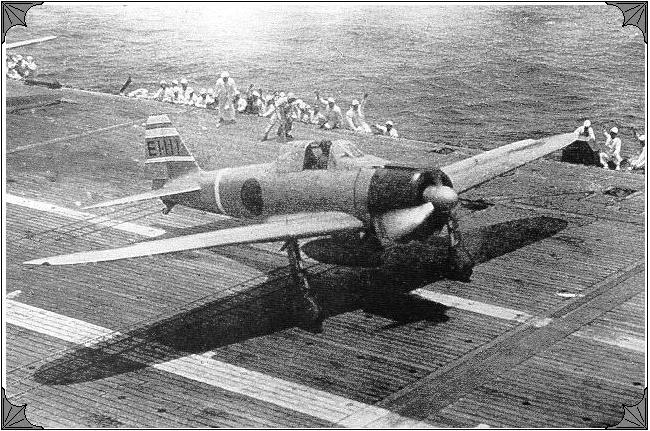
Imperial Japanese Navy - PLANES - Carrier Aircraft Types ==========================================================================
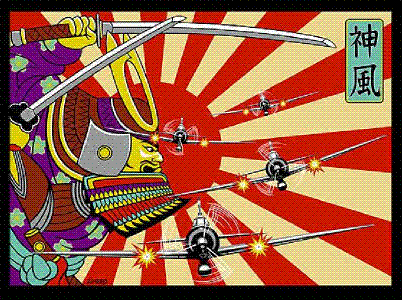

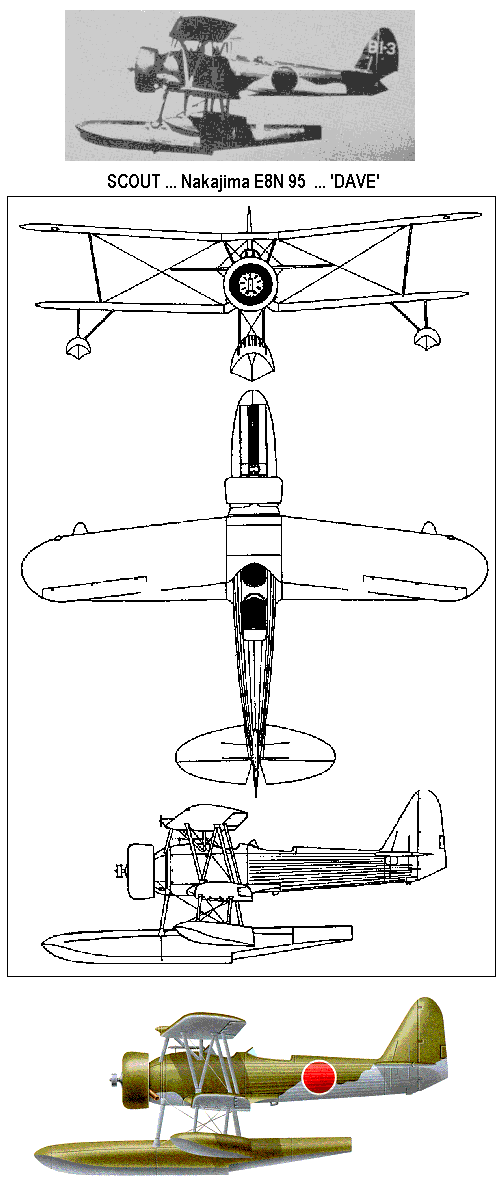
Designed to replace the company's E4N2 in navy service, Nakajima's MS submission was basically an updated version of the E4N2. Of similar biplane configuration, with a central float and underwing stabilising floats, it was powered by a 433kW Kotobuki 2 KAI 1 radial engine, and differed from its predecessor primarily by having revised wings and tail unit. Seven prototypes were tested from March 1934 and, following evaluation against competing aircraft from Aichi and Kawanishi, the MS was ordered into production in October 1935 as the Navy Type 95 Reconnaissance Seaplane Model 1 (Nakajima E8N1). An E8N2 with im proved equipment and a more powerful engine was introduced before production ended in 1940, when a combined total of 755 had been built by Nakajima (707) and Kawanishi (48). Used successfully, during the Sino-Japanese War in roles which included artillery spotting and dive-bombing as well as reconnaissance, some were still operating from navy vessels at the beginning of the Pacific war, gaining the Allied codename 'Dave'. They were soon diverted to secondline duties such as communications, liaison and training.

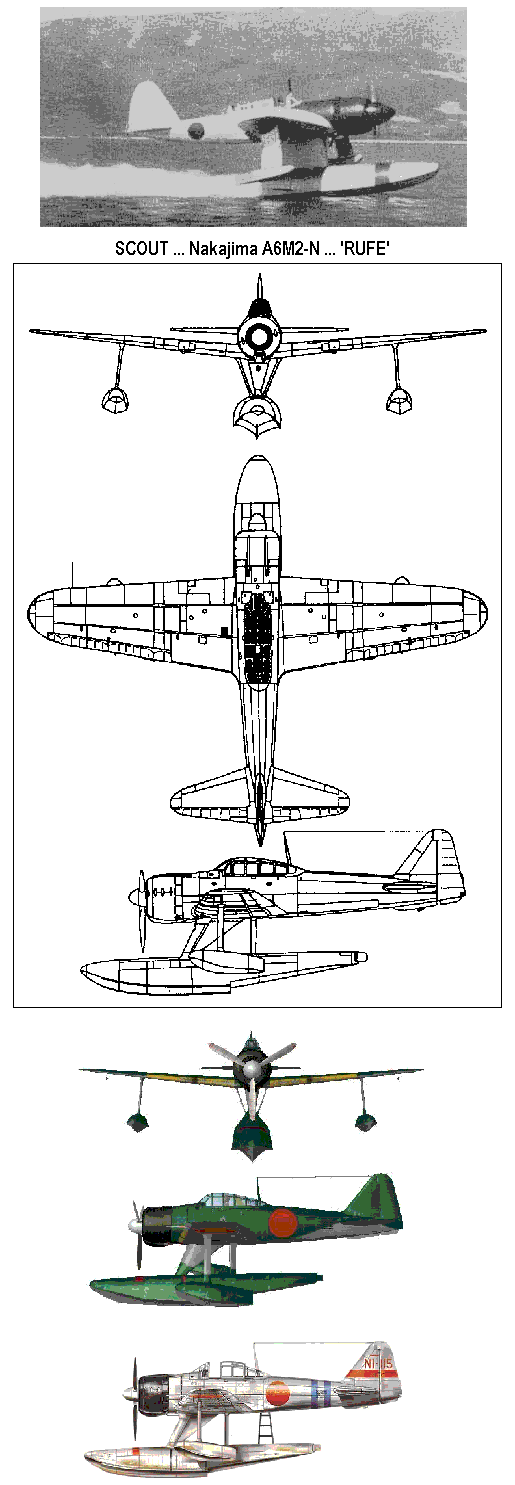
Japan was the only nation to produce and deliver into service float-equipped single-seat interceptor fighter seaplanes (the British Spitfire float adaptation did not progress beyond the experimental stage). When in 1940 the Japanese navy initiated the design of a new interceptor seaplane (the Kawanishi N1K1 Kyofu, or 'Rex'), the need was also expressed for a stopgap aircraft and the Nakajima company was instructed in February 1941 to develop a float-equipped version of the excellent Mitsubishi A6M2 Zero naval interceptor. As evidence of Japan's long-standing plans for territorial expansion through the Pacific, it had been recognized that in the inevitable 'island-hopping' war there would be few ready-made air bases from which to provide air cover during the occupation of the smaller islands, and that the construction of runways would be impractical. Although equipped with almost a dozen aircraft-carriers, the Japanese would be unable to use them in support of every single island invasion. After removing the wheel landing gear and fairing over the wheel wells of a standard A6M2, Nakajima mounted a large float under the fuselage by means of a forward-raked central pylon and a pair of V-struts below the cockpit; two cantilever stabilizing floats were also mounted under the wings. The standard Zero gun armament was retained, and the first prototype was flown on 7 December 1941, the day on which the Japanese navy attacked Pearl Harbor. Entering production as the Nakajima A6M2-N and codenamed 'Rufe' by the Allies, the new fighter still displayed a creditable performance, being first issued to the Yokohama Kokutai and deployed to Tulagi in the Solomons where the Japanese had first landed during the Battle of the Coral Sea. However, almost all the 'Rufes' were destroyed in a strike on the seaplane base by 15 Grumman F4Fs from USS Wasp on 7 August 1942. Better success attended the 'Rufes' which fought in the later Aleutian campaign, but losses soared as soon as American fighter strength could be built up. During the final year of the war, when American heavy bombers and naval aircraft opened their great attacks on the Japanese homeland, 'Rufes' of the Otsu Kokutai, based on Lake Biwa, were thrown into the battle as interceptors in defence of Central Honshu but suffered very heavy losses. Total production of 'Rufe' amounted to 327 before being halted in September 1943.
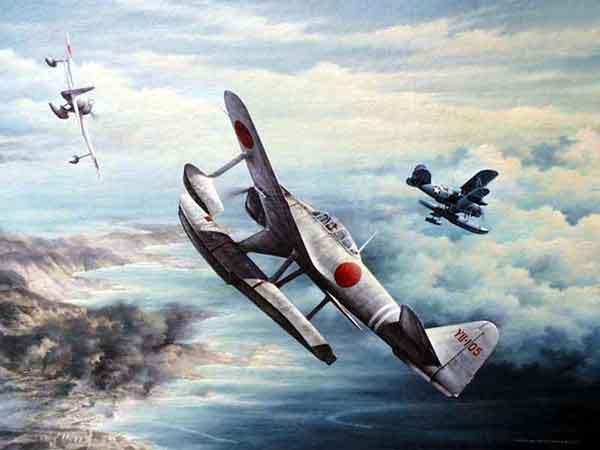
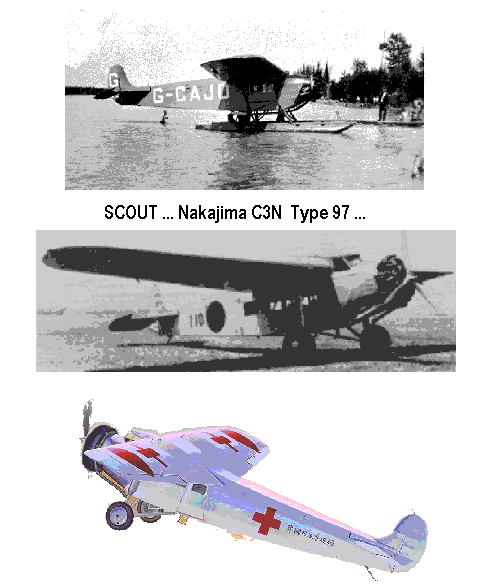
Single-engined, monoplane reconnaissance aircraft. Navy equivalent of the Ki-6.
The C2N1 was a landplane version, the C2N2 a floatplane version. The C3N did not enter production.
The Fokker Super Universal was an airliner produced in the United States in the late 1920s, an enlarged and improved version of the Fokker Universal. It was subsequently also manufactured under licence in Canada and Japan.
The Nakajima Ki-6 was a licensed produced version of the Fokker Super Universal transport built by Nakajima Aircraft Company in the 1930s. Initially used as an airliner, the militarized version was used by the Imperial Japanese Army in a variety of roles, ranging from medical evacuation to transport and training aircraft. It was used extensively in combat zones in Manchukuo and in China during the Second Sino-Japanese War.
The first Super Universal was brought to Japan in components and was assembled by Nakajima for Japan Air Transport. Under license production, Nakajima replaced the engine with a 450 hp (340 kW) Bristol Jupiter, also license-built in Japan, and later by its own Nakajima Kotobuki 460 hp (340 kW) engine.
The Imperial Japanese Navy Air Service ordered twenty Ki-6s, re-designating the aircraft as the “Navy C2N1” when used for land-based operations and an additional 30 Navy “C2N2” which were fitted as a floatplane. The naval version had a larger cabin and was used on reconnaissance and military transport missions.
The aircraft built in Japan were used for both civil and military roles with some remaining in operation until after World War II.
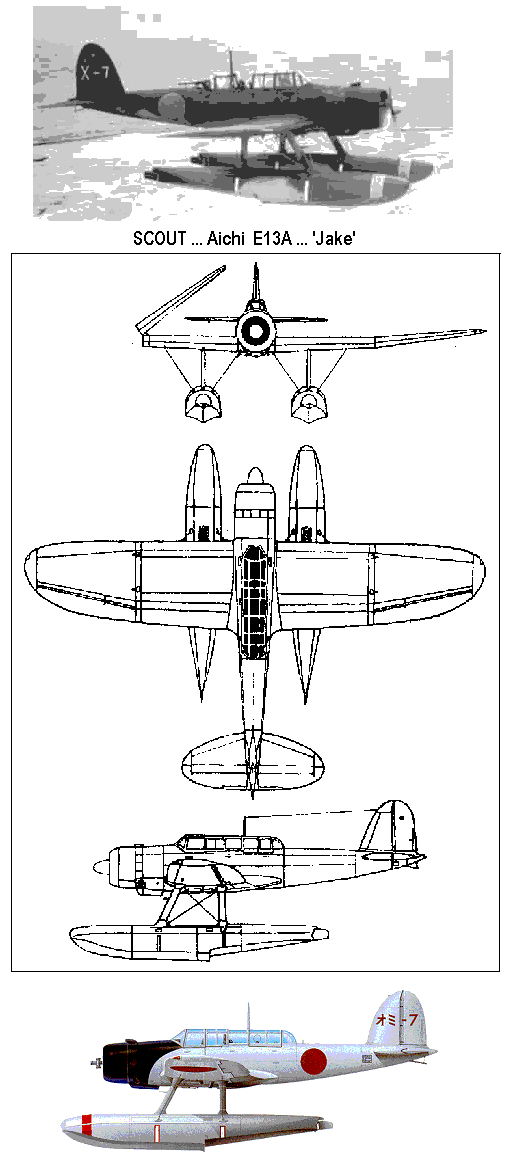
Numerically the most important of all Japanese float seaplanes during World War II, the Aichi E13A monoplane (of which 1,418 were produced) originated in a naval staff specification issued to Aichi, Kawanishi and Nakajima in 1937 for a three-seat reconnaissance seaplane to replace the six-year-old Kawanishi E7K2 float biplane. A prototype was completed late in 1938 and after competitive trials with the Kawanishi E13K in December 1940 was ordered into production as the Navy Type 0 Reconnaissance Seaplane Model 1. Early aircraft were embarked in Japanese cruisers and seaplane tenders the following year and, carrying a single 250kg bomb apiece, flew a series of raids on the Hankow-Canton railway. Soon afterwards E13A1 floatplanes accompanied the Japanese 8th Cruiser Division for reconnaissance patrols during the strike against Pearl Harbor in December 1941.
Thereafter, as production switched to Kyushu Hikoki KK at Zasshonokuma and accelerated, the seaplanes (codenamed 'Jake' by the Allies) were embarked in the battleships and cruisers of the Kantais (fleets), including the battleship Haruna and cruisers Chikuma and Tone of Vice Admiral Nagumo's Carrier Striking Force at the Battle of Midway. Because of mechanical problems with the ships' catapults there were delays in launching one of the four E13Als to search for the American carriers at dawn on the crucial 4 June 1942, depriving the Japanese of the vital initiative during the early stages of the assault on Midway. Furthermore the Chikuma's E13A1 was forced to return early when it suffered engine trouble, further reducing the all-important search area. One of the other 'Jake' pilots, from the cruiser Tone, eventually sighted the American fleet but at first failed to report the presence of carriers, causing a further 30-minute delay in arming the strike aircraft awaiting orders to launch from Japanese carriers. As it was, when the Americans launched their first strike, the pilots found the decks of the carriers Akagi, Kaga, Soryu and Hiryu clogged with aircraft which should have been attacking the American fleet.
In all, it is estimated that by mid-1943 more than 250 E13A1s were at sea aboard Japanese ships, though their use was severely curtailed whenever American fighters were in evidence. Nevertheless they continued to serve right up to the end of the war, many of them being ultimately used in suicide attacks on the huge American invasion fleets closing on the Japanese homeland.
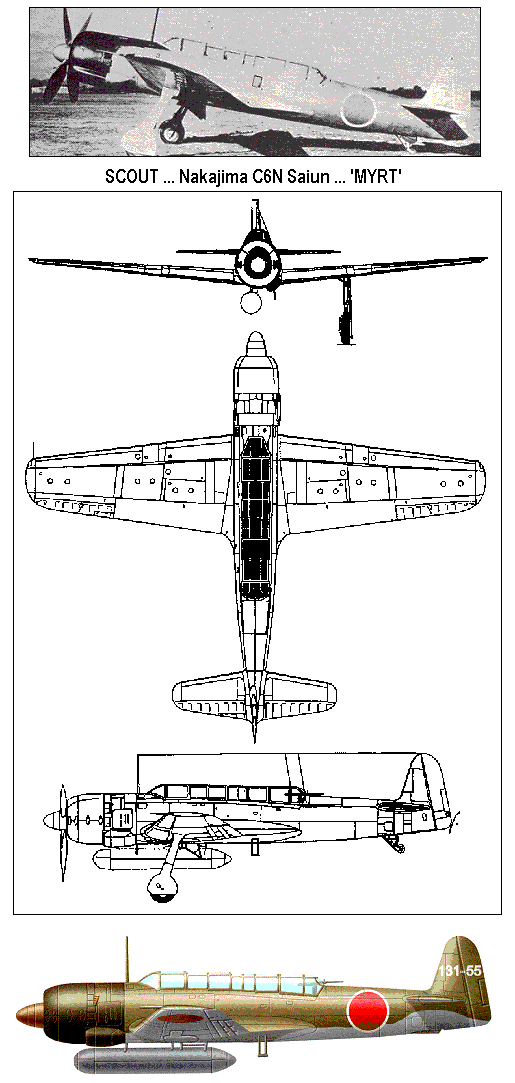
Early experience in the Pacific war showing the need for a long-range carrier-based reconnaissance aircraft, Nakajima was instructed in early 1942 to develop an aircraft to meet this Imperial Japanese Navy requirement. It resulted in an airframe similar to that of the company's B6N, the fuselage incorporating camera ports and observation windows, with power provided by a 1358kW Nakajima Homare 11 radial engine. The first prototype flew on 15 May 1943, its performance being disappointing with the Homare 11 engine, and 18 more prototype/pre-series aircraft followed, some with the more powerful Homare 21 engine, before the type was ordered into production in early 1944 as the Navy Carrier Reconnaissance Plane Saiun (Nakajima C6N1). Allocated the Allied codename 'Myrt' when it entered service in the summer of 1944, the Saiun (painted cloud) was fast enough to enjoy almost complete immunity from interception by Allied fighters. A total of 463 had been built' when production ended in August 1945, the total including a small number of C6N1-S two-seat night-fighter conversions from C6N1 aircraft, and one C6N2 prototype with a 1476kW Homare turbocharged engine.

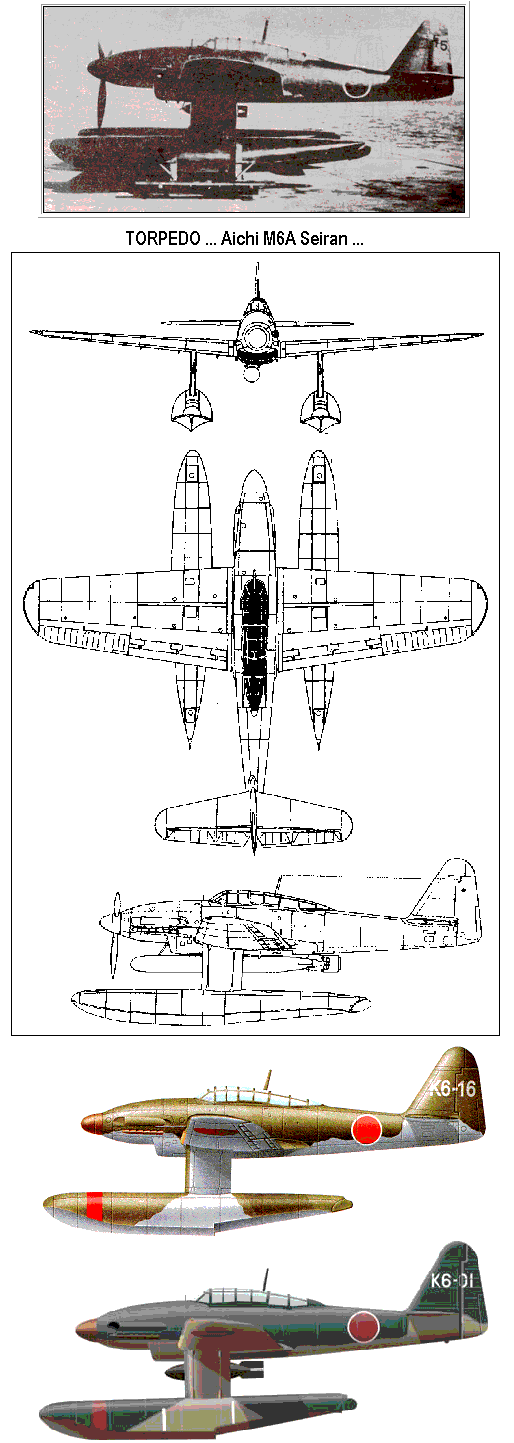

The Aichi M6A Seiran was a submarine-launched attack floatplane designed for the Imperial Japanese Navy.
It was intended to be used with the I-400, a 4500-ton submarine dubbed a "submersible aircraft carrier". Two to three of the craft would be stowed aboard in disassembled form, and launched by catapult. The twin floats could also be jettisonned to aid flight time of final tank of fuel, and the aircraft was essentially meant to be ditched at sea upon completion of its mission.
The first M6A1 was completed in November 1943, and 28 examples (including M6A1-Ks) were completed by 1945. Admiral Isoroku Yamamoto made plans back in early 1942 to launch a surprise air strike on the Panama Canal using the Seiran. The target was later changed in 1945 to the American aircraft carriers stationed at Ulithi Atoll following Yamamoto's death and reports of an impending attack on the home islands.
This mission was assigned to the 1st Submarine Flotilla, which comprised of two submarines, the I-400 and the flagship I-401, each carrying three Seirans. The flotilla departed Japan on 23 July 1945 and proceeded towards Ulithi. However, on 15 August, the flagship I-401 received a radio message from headquarters, informing them of Japan's surrender. They were ordered to return to the nearest port in Japan, ending the flotilla's first and only mission, and preventing the Seiran from ever entering combat. All six Seirans onboard the two submarines were catapulted into the sea with their wings and stabilizers folded to prevent capture by the Americans.

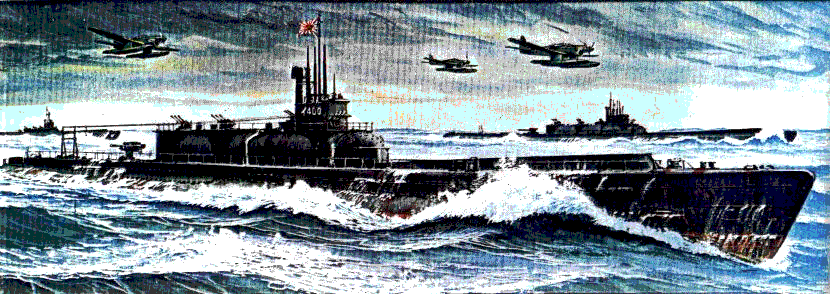
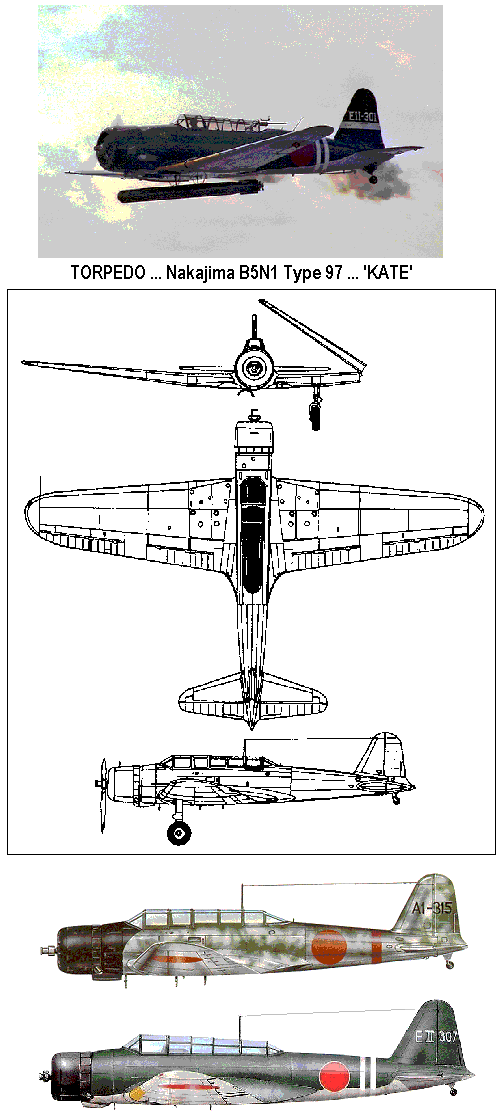
Two aircraft designed, built and flown within a year of each other on opposite sides of the Pacific – the TBD Devastator for the US and the Nakajima B5N (Allied reporting name “Kate”) for Japan – yet a world of difference in capabilities.
The Nakajima B5N was the Imperial Japanese Navy’s standard torpedo bomber for the first years of World War II. While the B5N was substantially faster and more capable than its Allied counterparts, the TBD Devastator and Fairey Swordfish, it was close to obsolescence by the time of the Pearl Harbor attack. Nevertheless, the B5N operated throughout the war. Although primarily used as a carrier-based aircraft, it was also used as a land-based bomber on occasions. The B5N had a crew of 3: pilot, navigator/bombardier/observer, and radio operator/gunner. One of the unique aspects of the Kate was the offset torpedo mounting to ensure clearance of the prop while dropping.
Early operations in the war against China had exposed weaknesses in protection that were similar to what hampered the Zero later – lack of adequate armor and self-sealing fuel tanks. Rather than take the penalty in weight by adding this items, Nakajima chose instead to increase the speed of the Kate hoping to enable it to out speed its expected fighter adversaries. That upgrade, the B5N2, was the definitive version of the Kate and saw action at Pearl Harbor and subsequent. Perhaps the actions the Kate is most famous for was its pivotal role in sinking the carriers Lexington, Yorktown and Hornet. All told, some 1,150 were built without a single example existing today. Those examples seen in museums or flying are replicas built for the film Tora!Tora!Tora! from Vultee BT-13s.
Designed to a 1935 requirement, and already in service for four years when Japan entered the war, the Nakajima B5N was in 1941 without question the best carrierborne torpedo-bomber in the world. Powered by a Nakajima Hikan radial engine, the low-wing three-crew monoplane with inwards-retracting wide-track landing gear was exceptionally clean, and first flew in January 1937. The following year production B5N1 aircraft were embarking in Japan's carriers and shore-based units were deployed in China. In 1939 the improved B5N2 appeared with a more powerful Sakae 11 engine in a smaller cowling, although armament and bombload were unchanged, and this version remained in production until 1943.
When Japan attacked the USA the B5N2 had wholly replaced the B5N1 with operational units, and 144 B5N2s were involved in the fateful attack on Pearl Harbor; within the next 12 months aircraft of this type sank the American carriers USS Hornet, Lexington and Yorktown. Given the reporting name 'Kate' by the Allies, the B5N certainly earned the respect of the Americans, and in all the major carrier battles of the Pacific War attracted the undivided attention of defending fighters. With its puny defensive armament of a single machine-gun and laden with a large bomb or torpedo, however, the B5N began to suffer very heavily, and although the type was fully committed during the Solomons campaign the survivors were withdrawn from combat after the Philippine battles of 1944. Thereafter, on account of their excellent range, they were assigned to antisubmarine and maritime reconnaissance duties in areas beyond the range of Allied fighters.
Production of all B5Ns reached 1,149.
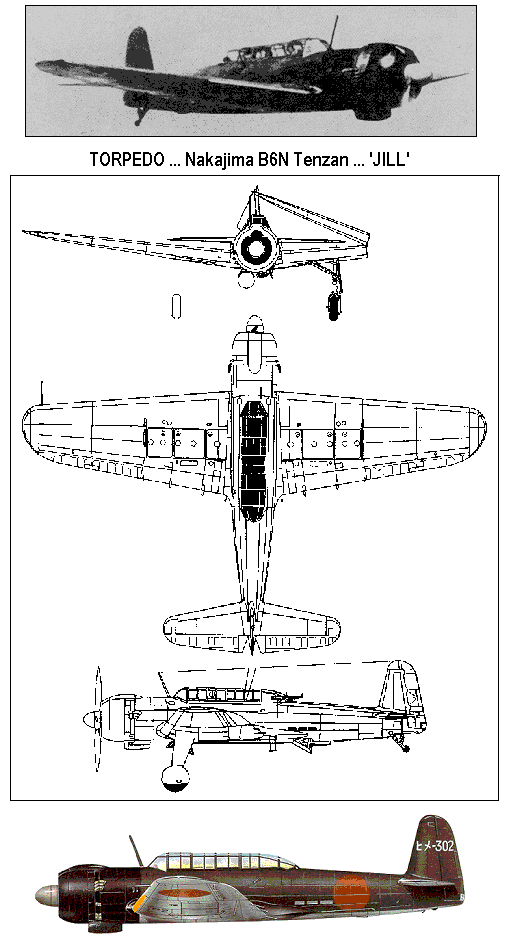
At a time when the triumphs of the B5N were still almost three years in the future, the Japanese navy issued a specification for a replacement, recognizing that only limited overall design improvement of the B5N could be achieved in the B5N2. Accordingly design went ahead in 1939 of the Nakajima B6N and, despite the navy's preference for the Mitsubishsi Kasei radial, a Nakajima Mamoru was selected for the prototype which flew early in 1941. Superficially the B6N Tenzan (heavenly mountain) resembled the earlier aircraft, but the much increased power and torque of the big engine and four-blade propeller was found to impose considerable directional stability problems, demanding that the vertical tail surfaces be offset to one side. Flight trials dragged on, and were further delayed by troubles during carrier acceptance tests; then Nakajima was ordered to stop production of the Mamoru engine, so modifications had to be introduced to suit installation of the Kasei. In due course B6N1 aircraft (of which only 133 were built) were embarked in the carriers Shokaku, Taiho, Hiyo, Junyo and Zuikaku, and took part in the great Battle of the Philippine Sea of June 1943, many being lost when the three first-named carriers were sunk. In that month production started of the slightly improved B6N2 (of which 1,133 were produced before the end of the war), but the heavy losses among Japanese carriers resulted in the 'Jill' being largely deployed ashore, particularly after the Battle of Leyte Gulf. Thereafter many BSNs were consigned to the kamikaze role.


Aichi Tokei Denki Kabushiki Kaisha, which was to become a significant aircraft design and construction company during World War II, had been established in Japan during 1899 as a manufacturer of electrical equipment and watches.
Like most Japanese companies that sought to expand their capabilities by turning initially to aircraft construction as a stepping stone to experience, that would lead eventually to the creation of indigenous designs, Aichi established a working relationship with Ernst Heinkel Flugzeugwerke in Germany. Wishing to contend in early 1931 for an Imperial Japanese navy requirement for a two-seat carrier-based dive-bomber, Aichi requested Heinkel to design and build an aircraft to meet the navy's specification. Required for operation with float or wheel landing gear, the resulting Heinkel He 50 prototype flew in the summer of 1931 with twin floats. A second version, with wheel landing gear, was duly supplied to Aichi under the export designation He 66.
Basically, the He 66 was a two-bay biplane of metal construction with metal and fabric covering. The braced tail unit was conventional, and landing gear of fixed tailskid type. As supplied it was powered by a 365kW Siemens SAM-22B (Jupiter VI) radial engine. Modifications carried out by Aichi included strengthening of the landing gear, and installation of a 418kW Nakajima Kotobuki 2 Kai 1 radial engine. In this form the Aichi Special Bomber was successful in trials against competing prototypes from Nakajima and Yokosuka, and was ordered into production as the Navy Type 94 Carrier Bomber (Aichi D1A1) The 162 production aircraft built, had the radial engine enclosed by a Townend ring, and other modifications included the introduction of slightly swept wings, and replacement of the tailskid by a non-castoring tailwheel. The last 44 had 433kW Kotobuki 3 engines.
An improved Aichi D1A2 (Navy Type 96 Carrier Bomber) appeared in 1936-7, powered by a more powerful Nakajima Hikari 1 radial engine, and this model also introduced a NACA engine cowling, wheel spats, and improved windscreens. Production of this version totalled 428.
Only a small number of D1A1s remained in use with training units at the time of Japan's attack on Pearl Harbor, on 7 December 1941. About 70 D1A2s were the serving in second-line units, and these were duly allocated the Allied codename 'Susie'.
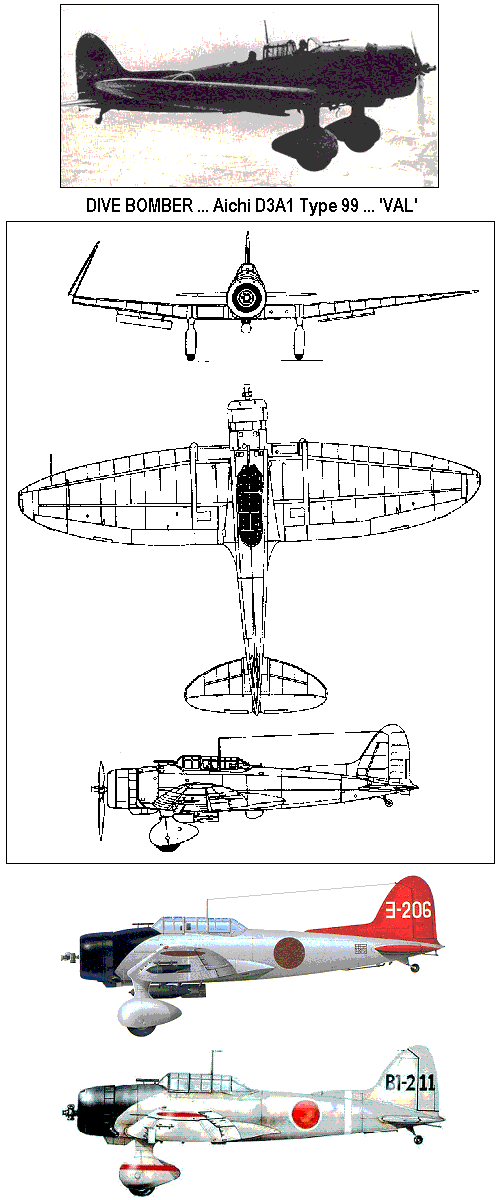
First flown in 1938 and deployed in 1940, in the first ten months of WWII the Aichi D3A (Allied code name Val) accounted for more shipping sunk than any other aircraft in any other theater. The outcome of a competition between Achi and Nakajima, the Val’s design was inspired in part by the elliptical wings of the Heinkel He70 and the fuselage was similar to that of the Zero (though strengthened for stresses of dive bombing). Drag at the rather sedate speeds the Val would operate at was not as great a factor, so the gear was fixed and faired.
Designed to a 1936 carrier-based dive-bomber requirement, the prototype was flown in January 1938 with a 530kW Nakajima Hikari 1 Radial. Production D3A1 aircraft had slightly smaller wings and were powered by the 745kW Mitsubishi Kinsei 43 radial. A dorsal fin extension considerably improved the aircraft's manoeuvrability, although the armament of only two forward-firing 7.7mm machine-guns, with another of the same calibre in the rear cockpit, was undeniably puny.
Although thought to be obsolescent when Japan entered the war, the Aichi D3A was the first Japanese aircraft to drop bombs on American targets when aircraft of this type took part in the great raid on Pearl Harbor on 7 December 1941. The version faced at Midway was the D3A1. (The Allied reporting name was 'Val'.)
Starting with the attack on Pearl Harbor, D3As were flown in all major carrier actions during the first 10 months of the war and sank more Allied naval vessels than any other Axis aircraft. Among British casualties in D3A1 attacks were HMS Hermes (the world's first carrier to be sunk by carrier aircraft), and the cruisers Cornwall and Dorsetshire in an Indian Ocean strike in April of 1942. Heavy losses among D3Als during and after the Battle of the Coral Sea, however, forced withdrawal by most of the survivors to land bases. In 1942 the D3A2 was introduced with increased fuel capacity and more powerful engine, but by 1944 the aircraft were hopelessly outclassed by American fighters; a small number was subsequently employed in Kamikaze attacks.
By 1944, the Val had been pretty much removed from frontline service and when pressed into the battles of the Philippine Sea and Leyte Gulf, they were essentially massacred by the far superior American fighters. Their final role was to serve as Kamikaze platforms – also ineffectively.
Eventually it was replaced by the Yokosuka D4Y ‘Comet’ (Judy).
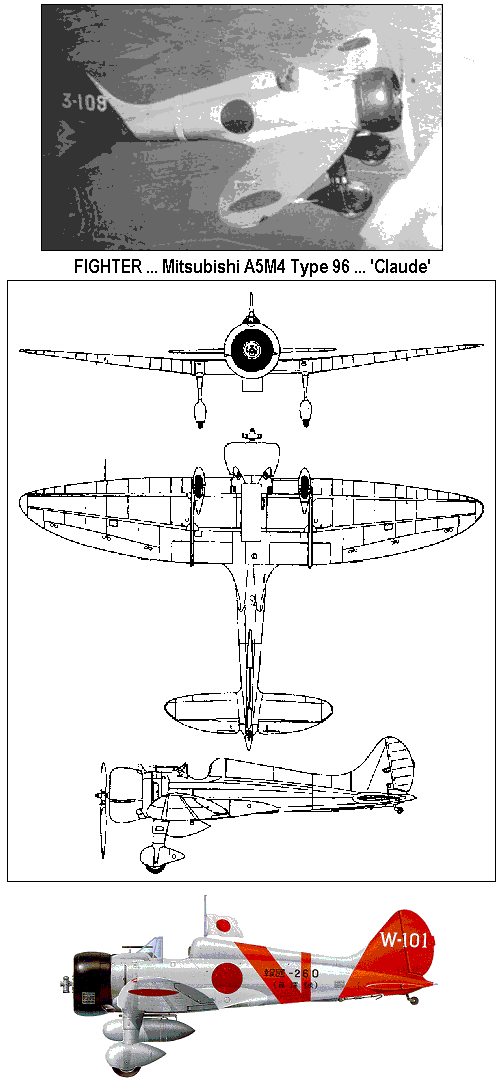
The Mitsubishi A5M a Japanese carrier based fighter aircraft. It was the world's first monoplane shipboard fighter and the direct ancestor of the famous Mitsubishi A6M 'Zero'.
An Imperial Japanese Navy specification of 1934 for a single-seat fighter with a maximum speed of 350km/h then seemed an almost unattainable target. However, Mitsubishi's Ka-14 prototype designed to this requirement, and flown for the first time on 4 February 1935, demonstrated a top speed of 450km/h in early trials. Unfortunately it had some aerodynamic shortcomings, and the inverted gull-wing of.this aircraft was replaced by a conventional low-set monoplane wing in the second prototype which, with a 436kW Nakajima Kotobuki 2-KAI-1 radial engine, was ordered into production as the Navy Type 96 Carrier Fighter Model 1 (Mitsubishi A5M1). The generally similar A5N2a which followed, powered by the 455kW Kotobuki 2-KAI-3 engine, and the A5M2b with the 477kW Kotobuki 3 engine, were regarded as the Japanese navy's most important fighter aircraft during the Sino-Japanese War. Two experimental A5M3 aircraft were flown with the Hispano-Suiza 12Xcrs engine, but the final and major production version was the A5M4, built also as the A5M4-K tandem two-seat trainer. All versions of the A5M were allocated the Allied codename 'Claude', and when production ended a total of 788 had been built by Mitsubishi, including prototypes; a further 303 were built by Watanabe (39) and the Omura Naval Air Arsenal (264). The Japanese army had also shown interest in the A5M, resulting in the evaluation of a Ki-18 prototype generally similar to the Ka-14, but although fast this was considered to be lacking in manoeuvrability. Mitsubishi produced two re-engined and improved Ki-33 prototypes but they, too, were considered insufficiently manoeuvrable and no army production contract resulted.
Almost all A5Ms had open cockpits; a closed cockpit was tried, but found little favor among Navy aviators. All had fixed, non-retractable undercarriage with (except for the trainers) wheel spats (fairings).
Some A5Ms were still in service at the beginning of World War II. United States intelligence sources believed the A5M was still the primary Navy fighter, but they had already been replaced by the A6M 'Zero' on first-line aircraft carriers and with the Tainan Air Group. Other Japanese carriers and air groups continued to use the A5M until production of the 'Zero' caught up with demand. The last combat actions with the A5M as a fighter took place at the Battle of the Coral Sea on 7 May 1942, when two A5Ms and four A6Ms of the Japanese carrier Shôhô fought against the US planes that sunk their carrier.
Most remaining airframes were used for kamikaze attacks in the closing months of the war.

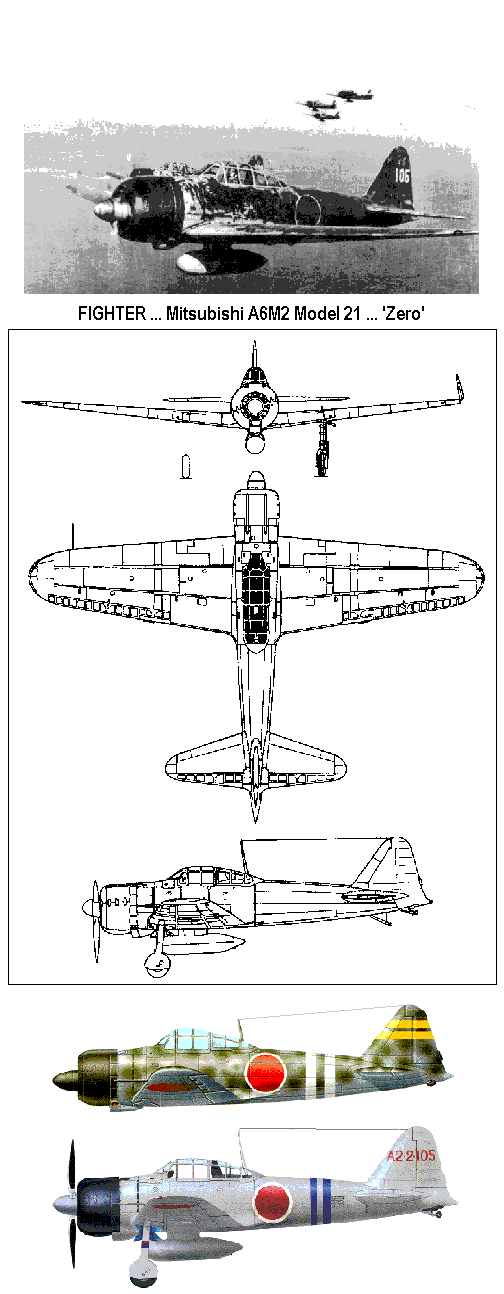
The Mitsubishi A6M Zero ("A" for attack fighter, 6th model, "M" for Mitsubishi) was a light-weight, carrier-based fighter aircraft employed by the Imperial Japanese Navy Air Service from 1940 to 1945. At the time it was introduced, the Mitsubishi A6M was the best carrier-based fighter plane in the world and was greatly feared by Allied pilots.
Widely known as the Zero (from its Japanese Navy designation, Type 0 Carrier Fighter - Rei shiki Kanjo sentoki), taken from the last digit of the Imperial year 2600 (1940), when it entered service, in Japan it was unofficially referred to as both Rei-sen and Zero-sen.
The definitive version of the Zero was the A6M2 Type 0, Model 21 which saw 740 completed by Mitsubishi and another 800 by Nakajima. This was the version that escorted the attack at Pear Harbor and met American aircraft in the skies over and around Midway.
The famous 'Zero' was the first carrierborne fighter in the world capable of outperforming any contemporary land-based fighter it was likely to confront. Because of inept Allied intelligence it was able to achieve immediate air superiority over the East Indies and South East Asia from the day Japan entered the war. Designed under the leadership of Jiro Honkoshi in 1937 as a replacement for the neat but obsolescent A5M, the prototype A6M1 was first flown on 1 April 1939 with a 582kW Mitsubishi Zuisei 13 radial; production A6M2 fighters with two wing-mounted 20mm guns and two nose-mounted 7.7mm guns were fitted with the 708kW Nakajima Sakae 12 radial, and it was with this version that the Japanese navy escorted the raiding force sent against Pearl Harbor, and gained air superiority over Malaya, the Philippines and Burma.
When it appeared on the scene, the Zero was a strategic surprise of the nastiest sort for opposing fighters. Excellent maneuverability combined with exceptional range outclassed then-frontline Allied fighters like the P-40 and the F4F Wildcat, until it’s glass jaw was discovered. Mitsubishi had designed and built a leading edge fighter but in the process of doing all it could to lighten the aircraft (and thereby enhance speed, range and maneuverability) they left off armor plating, self sealing fuel tanks and other protective gear. A Zero could be brought down with a fairly short burst of gunfire. Even the Japanese pilots recognized it.
Changes in tactics (diving attacks, Thatch Weave) would begin to offset the Zero’s advantages and when the next generation of fighters appeared on the scene – the Hellcat and Corsair especially, the Zero’s days as master of the skies was over.
In the spring of 1942 the A6M3 with two-stage supercharged Sakae 21 entered service, later aircraft having their folding wing tips removed. The Battle of Midway represented the Zero's combat zenith; thereafter the agile Japanese fighter found itself ever more outclassed by the American F6F Hellcat and P-38 Lightning. To counter the new American fighters the A6M5 was rushed to front-line units; this version, with Sakae 21 engine and improved exhaust system, possessed a top speed of 565km/h, more A6M5s (and subvariants) being produced than any other Japanese aircraft. It was five A6M5s of the Shikishima Kamikaze unit that sank the carrier St Lo and damaged three others on 25 October 1944. Other versions were the A6M6 with water-methanol boosted Sakae 31 engine and the A6M7 fighter/dive-bomber. Total production of all A6Ms was 10,937. (The reporting name'Zeke' was given to the A6M, and 'Rufe' to a float version, the A6M2-N.)
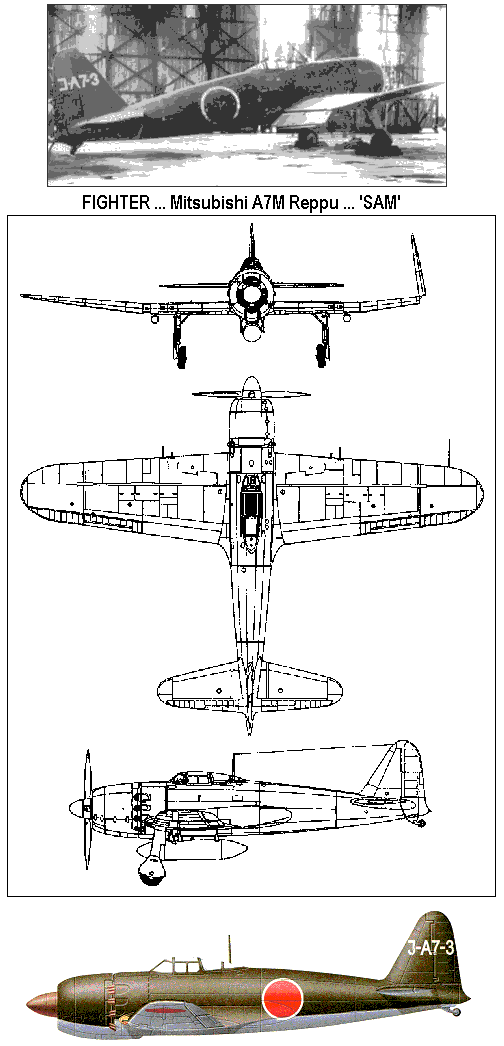
The design by Mitsubishi of a carrier-based fighter to supersede the A6M Zero-Sen had been planned by the Japanese navy as early as 1940, but was frustrated, by the company's involvement in urgent development and- production programmes. It was not until 1942 that design of the M-50 Reppu (hurricane) began, but the continuing pressure on Mitsubishi for developments of the ABM meant that it was not until 6 May 1944 that the first prototype, which by then had the company designation Mitsubishi A7M1, was flown for the first time. A cantilever low-wing monoplane with retractable tailwheel landing gear, the A7M1 soon revealed excellent flight characteristics, but as predicted by Mitsubishi the type's maximum speed on the power of the installed Nakajima NK9K Homare 22 engine was below specification. Further testing was abandoned until availability of the 1641kW Mitsubishi MK9A radial engine made it possible to build seven A7M2 prototype and service trials aircraft, the first prototype being flown on 13 October 1944. Clearly a potent fighter that could meet Allied opposition on equal terms, the Reppu had a maximum speed of 630km/h at optimum altitude and was ordered into production as the Navy Carrier Fighter Reppu Model 22. Unfortunately, by then it was too late for the Japanese navy, While it was hoped that the A7M would replace the A6M, production was disrupted by an earthquake in December 1944 in the Nagoya region, and by Allied bombing, with only eight aircraft completed by the end of the war, and the type never seeing combat.
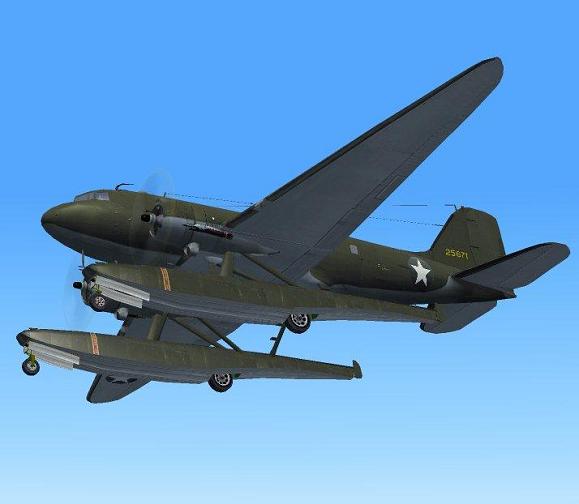
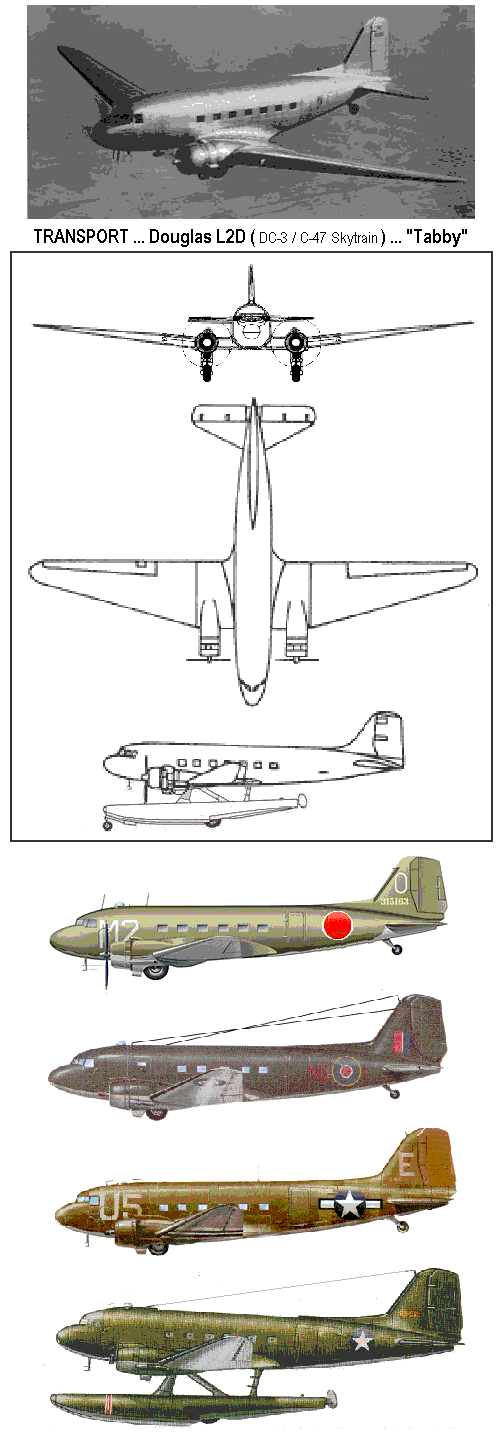
One of the world's truly outstanding aeroplanes, the DC-3 resulted from American Airlines' requirement for a sleeper aircraft for its US transcontinental route. The DC-2 fuselage was too small for this, so, reluctantly, in the autumn of 1934 Douglas agreed to build the DST (Douglas Sleeper Transport) as an enlarged DC-2, with lengthened fuselage, increased span and, most important, an increase of 66cm in fuselage width - allowing up to 28 seats or 14 sleeping berths.
The prototype DST, with 633.4-745kW Wright Cyclone SGR-1820 engines, made its first flight on 17 December 1935 (not inappropriately the 32nd anniversary of the first powered flight by the Wright Brothers). The type entered service with American Airlines on 25 June 1936 over the New York-Chicago route, with transcontinental sleeper services starting on 18 September. The DC-3/DST soon proved itself and orders grew rapidly, with KLM becoming the first operator outside the US. Including 40 DST, 430 DC-3 had been delivered when the USA entered the war - one flew more than 84,000 hours.
The DC-3 did not go unnoticed by one of Douglas's oldest customers -- the U.S. Army.
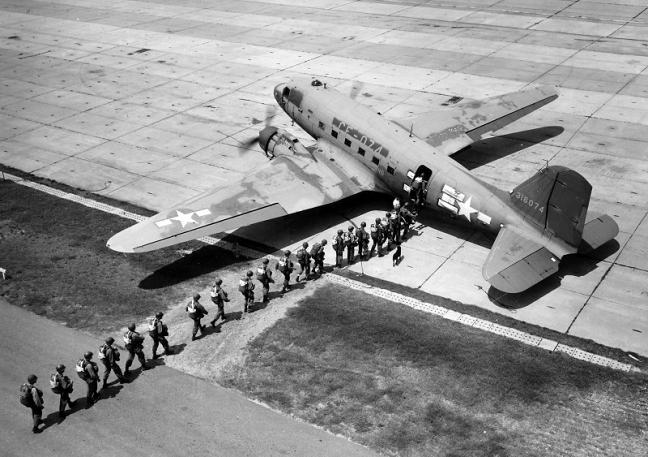
As a supply plane, the C-47 could carry up to 6,000 pounds of cargo. It could also hold a fully assembled jeep or a 37 mm cannon. As a troop transport, it carried 28 soldiers in full combat gear. As a medical airlift plane, it could accommodate 14 stretcher patients and three nurses. Seven basic versions were built, and the aircraft was given at least 22 designations, including the AC-47D gunship, the EC-47 electronic reconnaissance aircraft, and the C-53 Skytrooper.
The aircraft had such enormous potential that it was ordered in very large numbers by the US armed forces and when production ceased in 1947 Douglas had built 10,654 examples of all civil and military variants; Nakajima and Showa in Japan had built 485 as the L2D (allied code name 'Tabby'), and about 2,000 had been built in the USSR as the PS-84, but later redesignated Lisunov Li-2 with 742kW Shvetsov engines.
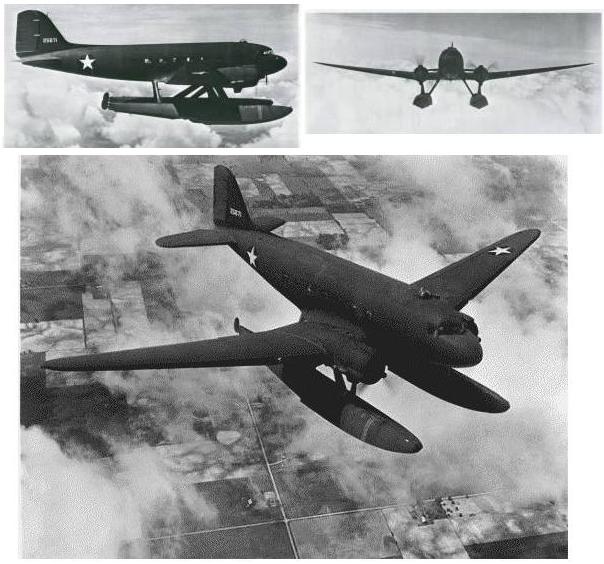
The DC-3 was built in numerous versions and with a wide range of Wright Cyclone and Pratt & Whitney Twin Wasp engines ranging in power from 742 to 894kW. The aircraft were operated on wheels and skis - one even had floats (the XC-47G-DL) - and there was the XCG-17 experimental troop-carrying glider version. Original US military contracts covered 10,047 aircraft of which more than 9,500 were versions of the C-47 Skytrain with reinforced floor and double doors, and 380 G-53 Skytroopers. Every branch of the U.S military and all the major allied powers flew it. The US Navy ordered the DC-3 as the R4D. A wide range of military designations was given to civil aircraft impressed by the services before delivery including G-48, C-49, C-50, C-51, G-52, G-68 and C-84. The British and the Australians designated it the Dakota (a clever acronym composed of the letters DACoTA for Douglas Aircraft Company Transport Aircraft) - a name which has been widely used in place of the correct DC-3 designation. The aircraft operated from every continent in the world and participated in every major battle. By the end of World War II, more than 10,000 had been built. For all of its official and unofficial names, it came to be known universally as the "Gooney Bird." In the China-Burma-India theatre they 'humped' supplies over the Himalayas from India to China and carried airborne troops on all major invasions. General Dwight D. Eisenhower, Supreme Commander of Allied Forces in Europe, termed it one of the most vital pieces of military equipment used in winning the war.
C-47s remained in active military service long after the end of World War II. Post-war they contributed to the Berlin Airlift, carried supplies and troops into and wounded men out of Korea, and even fought as heavily armed gun-ships in Vietnam.
After World War II very large numbers of military DC-3 became surplus and were acquired by most of the world's airlines. In the early post-war years they formed the backbone of most airline fleets, initially with austere interiors but later brought up to much higher standards. Some were equipped to carry as many as 36 passengers but 21-28 was standard. Many others were used for cargo and mail.
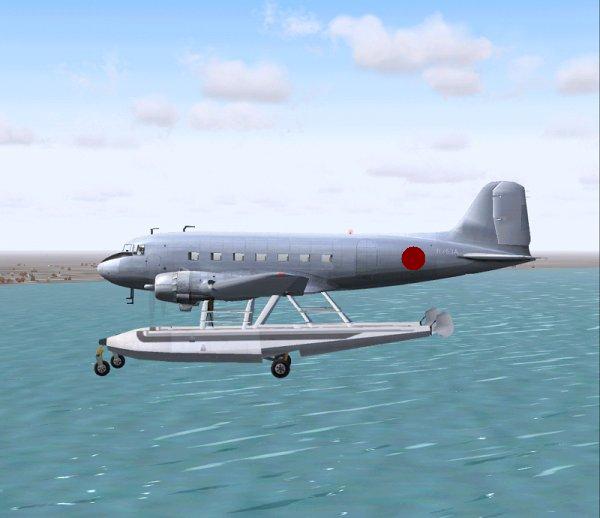
The Yokosuka D4Y Suisei ("Comet") - Allied reporting-name "Judy" - was the D3A's replacement, and by late 1944 relatively few Vals were left in service.
The D4Y had been designed to a demanding specification of 1937, which called for a two-seat dive-bomber as fast as the A6M Zero-Sen fighter. It was one of the few Japanese aircraft to go into production with a liquid-cooled engine.
The supposedly lower drag of the in-line motor was one means of meeting the demand for high speed, but the Daimler-Benz 601 had an unsuccessful history in Japanese service. In 1943 the main problems with the Judy were eliminated by replacing the 601 with the reliable and smooth-running Kinsei 62 radial. After the Battle for Leyte Gulf battle the D4Y was extensively employed as a Kamikaze aircraft carrying 800 kg (1,764 lb) of explosives.
Well-proportioned and purposeful in appearance, the Yokosuka D4Y possessed an excellent performance and owed much of its concept to the German He 118, for whose manufacturing rights Japan negotiated in 1938. Designed as a fast carrier-based attack bomber and powered by an imported Daimler-Benz DB 600G engine, the D4Y1 was first flown in December 1941; D4Y1-C reconnaissance aircraft were ordered into production at Aichi's Nagoya plant, the first of 660 aircraft being completed in the late spring of 1942. The first service aircraft were lost when the Soryu was sunk at Midway. Named Suisei (comet) in service and codenamed 'Judy' by the Allies, many D4Yls were completed as dive-bombers, and 174 Suiseis of the 1st, 2nd and 3rd Koku Sentais were embarked in nine carriers before the Battle of the Philippine Sea. However, they were intercepted by American carriers, and suffered heavy casualties without achieving any success. A new version with 1044kW Aichi Atsuta 32 engine appeared in 1944 as the D4Y2 but, in the interests of preserving high performance, nothing was done to introduce armour protection for crew or fuel tanks, and the sole improvement in gun armament was the inclusion of a 13.2mm tramable gun (replacing the previous 7.92mm gun) in the rear cockpit. This version suffered heavily in the battle for the Philippines. Problems of reliability with the Atsuta (DB 601) engine led to adoption of a Kinsei 62 radial in the D4Y3, and this engine was retained in the D4Y4 which was developed in 1945 as a single-seat suicide dive-bomber. A total of 2,033 production D4Ys were completed.
KAMIKAZE
=========================
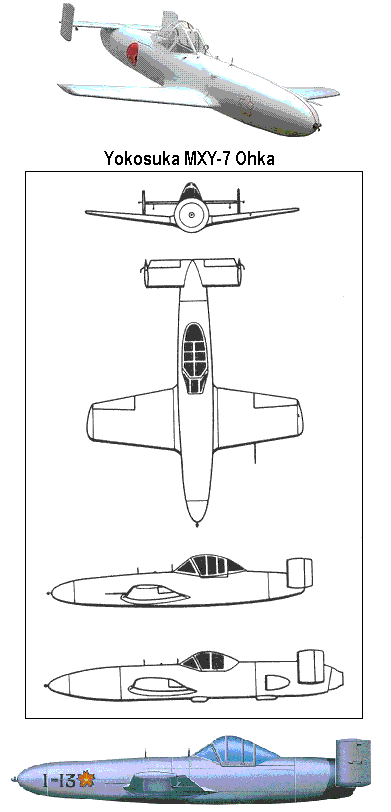
The Ohka suicide rocket-missles of the Thunder-Gods Corps.
It was during the summer of 1944 when, faced with overwhelming and fast-increasing Allied strength in the Pacific theatre, the Japanese naval staff first seriously entertained the concept of employing suicide tactics to defeat enemy attacks, and it was Ensign Mitsuo Ohta who first produced a rough design for a piloted flying bomb, a design which was assigned to Yokosuka for detailed completion. The resulting device was a small, mainly wooden aircraft with three solid-propellant rockets in the rear fuselage and a 1200kg explosive warhead in the nose. Carried aloft in the bomb bay of a modified Mitsubishi G4M bomber and flown towards the target area, the Yokosuka MXY7 Ohka (cherry blossom) bomb would be released, its rockets fired and then flown directly to impact on a selected target; the pilot was sealed into his cockpit before take-off. Initial powered flights started at Sagami in October 1944, followed by unmanned, powered flights the next month. Production was put in hand, and a total of 755 Ohkas was built before March 1945 when production ended. The weapon was first employed by the 721st Kokutai on 21 March 1945, but the carrier aircraft were intercepted and forced to release their flying bombs too early. On 1 April the US battleship West Virginia and three transport vessels were hit and damaged by Ohkas. Limited success attended other suicide attacks by Ohkas, but the transport aircraft proved fatally vulnerable in the presence of powerful American defences and the Japanese suicide tactic was never a serious threat to Allied operations in the Pacific, for all its macabre implications.
The Yokosuka MXY-7 Ohka, ("cherry blossom" ) was a purpose-built, rocket powered Kamikaze suicide missile employed by Japan towards the end of World War II. The United States gave the aircraft the name Baka (Japanese for "idiot").
It was a manned flying bomb that was carried underneath a Mitsubishi G4M "Betty", Yokosuka P1Y Ginga "Frances" (guided Type 22) or planned Heavy Nakajima G8N Renzan "Rita" (transport type 43A/B) bomber to within range of its target; on release, the pilot would first glide toward the target and when close enough he would fire the Ohka's rocket engine and guide the missile towards the ship that he intended to destroy. The final approach was almost unstoppable (especially for Type 11) because the aircraft gained tremendous speed. Later versions were designed to be launched from coastal air bases and caves, and even from submarines equipped with aircraft catapults, although none were actually used this way.
Conceived by Ensign Mitsuo Ohta of the 405th Kokutai, and aided by students of the Aeronautical Research Institute at the University of Tokyo, Ohta submitted his plans to the Yokosuka research facility. The Imperial Japanese Navy decided the idea had merit and Yokosuka engineers of the First Naval Air Technical Bureau (Kugisho) created formal blueprints for what was to be the MXY7. The only variant which saw service was the Type 11, and was powered by three Type 4 Mark 1 Model 20 rockets. 150 were built at Yokosuka, and another 600 were built at the Kasumigaura Naval Air Arsenal.
Essentially a 1200 kg (2,646 lb) bomb with wooden wings powered by three Type 4 Model 1 Mark 20 solid-fuel rocket motors, the Type 11 achieved great speed but with limited range. This was problematic as it required the slow heavily laden mother aircraft to approach within 20 nautical miles (40 km) of the target, making them very vulnerable to defending fighters.
It appears that the operational record of Ohkas used in action includes three ships sunk or damaged beyond repair and three other ships with significant damage. Seven US ships were damaged or sunk by Ohkas throughout the war.

=================================================================================
NB: The above text has been collected / excerpted / edited / mangled / tangled / re-compiled / etc ... from the following online sources :
SCOUT - Nakajima E8N 95 - 'DAVE' - www.aviastar.org article #1
SCOUT - Nakajima A6M2N - 'RUFE' - www.aviastar.org article #2
SCOUT - Nakajima C3N Type 97 - wikipedia article #1
SCOUT - Nakajima C3N Type 97 - www.aviastar.org article #3
SCOUT - Aichi E13A - 'JAKE' - www.aviastar.org article #4
SCOUT - Nakajima C6N Saiun - 'MYRT' - www.aviastar.org article #5
TORPEDO BOMBER - Aichi M6A Seiran - www.aviastar.org article #6
TORPEDO BOMBER - Nakajima B5N1 Type 97 - 'KATE' - www.aviastar.org article #7
TORPEDO BOMBER - Nakajima B6N2 Type 12 Tenzan - 'JILL' - www.aviastar.org article #8
DIVE BOMBER - Aichi D1A 'SUSIE' - www.aviastar.org article #9
DIVE BOMBER - Aichi D3A1 Type 99 - 'VAL' - www.aviastar.org article #10
FIGHTER - Mitsubishi A5M4 Type 96 - 'CLAUDE' - www.aviastar.org article #11
FIGHTER - Mitsubishi A6M2 Model 21 Reisen - 'ZERO' - www.aviastar.org article #12
FIGHTER - Mitsubishi A7M Reppu - 'SAM' - www.aviastar.org article #13
TRANSPORT - Douglas DC-3 / C-47 Skytrain - www.aviastar.org article #14
TRANSPORT - Douglas DC-3 / C-47 Skytrain - www.boeing.com/history
IJN - Yokosuka D4Y dive Bomber - www.aviastar.org article #15
IJN - Yokosuka MXY-7 Ohka Suicide Bomber - www.aviastar.org article #16
OHKA suicide rocket-missle - wikipedia article #2
IJN - Index of Planes - www.aviastar.org
IJN - Aircraft Carrier Planes - steeljawscribe.com
IJN - Naval Air Force - www.combinedfleet.com
